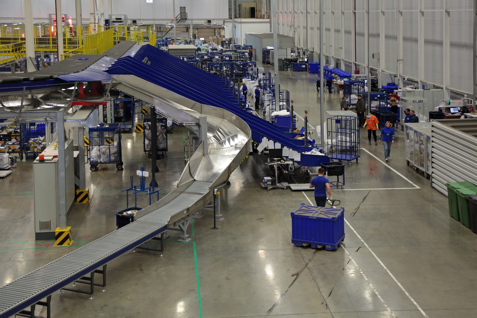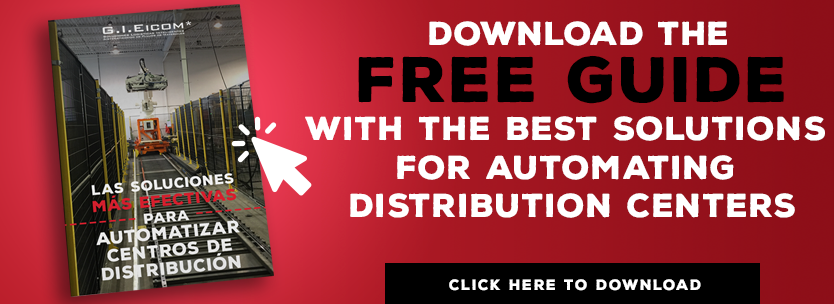 If you experience slow product classification or assortment processes with plenty of errors in your operations and you do not have a solution to update your inventory in real time, besides suffering losses in products and operations, you probably require an automated solution that includes sorters.
If you experience slow product classification or assortment processes with plenty of errors in your operations and you do not have a solution to update your inventory in real time, besides suffering losses in products and operations, you probably require an automated solution that includes sorters.Here is a guide for you to find out if your products are, in general, more suitable to be handled with a sorter, what type of sorter you should use, along with other considerations of interaction with your information system. Take note:
1. Type of products
It is worth clarifying that the type of products to be managed in a distribution center have solid shapes, even when they are not entirely regular or stiff. They are products that can be handled one by one or through flows of up to 400 items per minute, such as regular boxes with rigid and flat bottom sides. Also, packages with manipulable shapes, weights, and thicknesses. All this includes boxes or bags with clothing, food, beverages, manufactured products, medicine, cosmetics, hygiene products, among others.
2. How to determine what type of sorter is right?
We have developed the following table as a guide to provide an overview in this regard.
* Note: Remember that this guide is approximate, and that a specialist who is thoroughly familiar with the needs of your company must determine the best option for your specific application.
|
Type of sorter |
Maximum products flow suggested |
Type of products |
Type of packaging |
Environmental conditions |
|
0-60 |
Weight: 2-20 kg Size: Medium Shape: Defined Non perishable product |
Box Flat bottom Stiff |
Room temperature Closed, clean place |
|
|
|
60-80 |
Weight: 300gr-30kg Shape: Defined Non perishable and perishable products |
Box Flat bottom Stiff Medium sized Plastic lining
|
Room temperature Closed, clean place It can handle 8ºC – 30ºC |
|
160-180 |
Weight: 100gr -50kg Size: Medium Shape: Defined and non-defined Non perishable and perishable products |
Flat bottom Stiff Mainly medium-large sized Laminated
|
Room temperature Closed, clean place It can handle 0ºC – 30ºC |
|
|
180 - more |
Any solid product |
Any product |
Closed place It can handle 12ºC – 45ºC |
3. IT Requirements
Depending on the application, there are sorters that work in a virtually isolated form of computer interfacing with your system. They are able to operate by reading a label or its equivalent, carrying on the sorting function and issuing a report on the work performed. These operate autonomously.
At other times, an average interaction with the computer system is necessary, requiring a reading that relates the item read with some preset criteria for the operation. An example of this would be when a family of products is transferred to a particular output, where it is reported in real time to your system.
Another type of interaction may be that the client writes on a flat file the actions to be executed and, from there, the system can read and deliver reports. Likewise, interactions can occur in real time by running virtual sockets that establish and deliver instant information of the process.
Whatever the way the interaction between systems is given, IT specialists should be coordinated, as it is the systems the ones that run the operation executed by sorters.
4. Sorter selection process
Some steps to be determined by the supplier in order to propose the best alternative for your operations, should be as follows:
a) Verify that the company is a candidate for using a sorter
- Technical visits by specialists in intralogistics solutions.
- Analysis of type and product variety.
- Current and future production capacity.
- Analysis of the physical area of the client.
- Determination of physical interconnections and IT.
b) The operation and product flows are analyzed
- Process analysis within the operation.
- Lines that make up the DC or plant.
- Analysis of these products.
- Interaction with inputs and outputs for generating a solution.
- Determine the best solution which could be implemented with the support of other technologies.
- Coordination with internal users and customers.
c) Determine the financial and operational convenience of implementation
Often the purely financial analysis (mainly via reduction of workers) does not yield profitable results. However, considering variables such as accuracy, increased capacity, autonomous processes, reliability, traceability, visibility, and operation control, among others is highly recommended.
Avoid serious mistakes in the selection and implementation of intelligent systems for order classification and selection by using sorters.
In collaboration with: Alejandro Méndez



